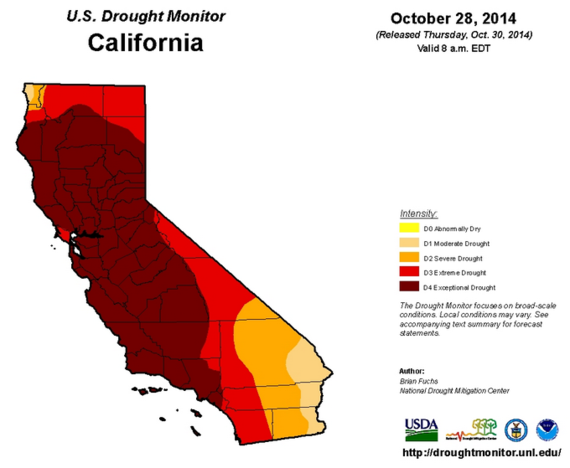by Peter Gleick, Kristina Donnelly, and Heather Cooley
California voters have approved Proposition 1 – the 2014 California Water Bond. The ultimate value and effectiveness of the bond will depend on how it is implemented and how the funds are spent. Here are some key issues to watch, things to understand about the new water bond, and recommendations:
1. Accelerate funding for disadvantaged communities: Water agencies that disperse (and receive) funds from Proposition 1 should rapidly expand efforts to provide desperately needed and long-overdue funds for disadvantaged communities that lack safe and reliable access to affordable tap water. Some of these communities have suffered from poor-quality water for years. State agencies know where the needs are and we know how to fix these problems through technology and improved treatment, new water delivery infrastructure, cleanup and protection of groundwater, and merging of ineffective small water agencies with larger or more effective ones. But money must also be made available for ongoing operation and maintenance of these systems.
2. Monitor the California Water Commission: The largest single portion of bond money was the $2.7 billion earmarked for the California Water Commission to allocate for storage projects. Given the ambiguity in the bond language, however, these funds could be used for almost any “storage” project, so long as it offers public benefits and improves water conditions in the Sacramento-San Joaquin Delta region, broadly defined. Before the money is allocated, the California Water Commission must define “public benefits” and decide how to review projects brought to them for consideration. Key here will be (i) the make-up of the commission, which has nine members appointed by the governor, and (ii) whether the commission makes these decisions transparently and with real public input and participation. Currently, the terms of three of the nine members are set to expire in January 2015 (Delfino, Hintz, and Del Bosque), two in January 2016 (Saracino and Ball), and the rest in January 2017 (Byrne and Quintero) or 2018 (Orth and Curtin). Thus, five out of the nine members potentially will be replaced before any final decisions on storage projects are made. Public oversight over the CWC process will be critical.
3. Keep an eye on groundwater: Proposition 1 (and the severe drought) has directly and indirectly raised the profile of groundwater in California. Coupled with the new state law requiring (slow) expanded monitoring and management of groundwater systems, Proposition 1 could provide substantial funding for creating groundwater management systems, accelerating groundwater storage projects, and cleaning up contaminated groundwater aquifers. For the first time, these precious and persistently over-tapped and abused water systems might actually be sustainably managed. That would be a good thing.
4. Don’t expect any immediate relief from the drought: As the Pacific Institute explicitly noted in its assessment of the language of Proposition 1, nothing in this bond measure can happen fast enough or widely enough to address our immediate water challenges. The only things that can be implemented quickly enough to mitigate the impacts of the current drought are serious and aggressive water conservation and efficiency efforts, and heavy rains — and only the former is under our control. Alas, only one percent of bond funds will be spent on conservation and efficiency, and these are the most important things we should be doing now.
5. Don’t assume Proposition 1 is the answer to our water problems: It isn’t. It is an expensive down-payment on a broad set of important projects that have been underfunded for years. At best, this money will help with some critical challenges, raise awareness of new steps that have to be taken, and highlight the need for other vital efforts. If the passage of the water bond makes everyone think we’ve done all we need to do, any momentum we’ve built toward solving our water problems will be lost. Let’s not let that happen.



